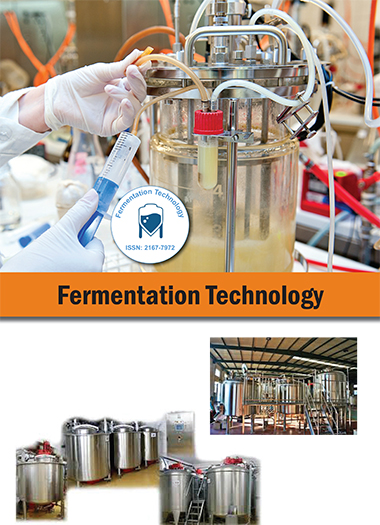indexado en
- Abrir puerta J
- Genamics JournalSeek
- Acceso a Investigación Global en Línea en Agricultura (AGORA)
- Búsqueda de referencia
- Universidad Hamdard
- EBSCO AZ
- OCLC-WorldCat
- Publón
Enlaces útiles
Comparte esta página
Folleto de diario

Revistas de acceso abierto
- Administración de Empresas
- Agricultura y Acuicultura
- Alimentación y Nutrición
- Bioinformática y Biología de Sistemas
- Bioquímica
- Ciencia de los Materiales
- Ciencia general
- Ciencias Ambientales
- Ciencias Clínicas
- Ciencias farmacéuticas
- Ciencias Médicas
- Ciencias Veterinarias
- Enfermería y Cuidado de la Salud
- Genética y Biología Molecular
- Ingeniería
- Inmunología y Microbiología
- Neurociencia y Psicología
- Química
Abstracto
Fermentación extractiva de ácido láctico con bacterias Hiochi en un sistema de dos fases líquidas
Michiaki Matsumoto, Masashi Nishimura, Hiroaki Kobayashi y Kazuo Kondo
La producción de ácido láctico por fermentación ha atraído interés porque el ácido láctico ópticamente puro es la materia prima del polímero biodegradable, ácido poliláctico, que se ha utilizado principalmente en el envasado de alimentos. La fermentación extractiva in situ de ácido láctico con extracción reactiva tiene dos problemas críticos: la toxicidad de los diluyentes y el extractante y la diferencia en el pH óptimo entre la fermentación y la extracción reactiva. En este estudio, la fermentación extractiva se realizó con bacterias Hiochi tolerantes al alcohol, Lactobacillus homohiochii y Lactobacillus fructivorans , utilizando la coencapsulación de las bacterias y carbonato de calcio para deprimir la disminución del pH en las cápsulas.
L. fructivorans NRIC0224 y 1-decanol se seleccionaron como la bacteria Hiochi y el diluyente, respectivamente, en función de la tolerancia al alcohol alifático y la extractabilidad. Descubrimos que la presencia de CaCO3 en polvo en el medio alivió considerablemente la toxicidad de la tri-n-octilamina (TOA) y que los componentes del medio, extracto de levadura y peptona, afectaron la extracción de ácido láctico con TOA en 1-decanol. Luego, co-inmovilizamos células de L. fructivorans NRIC0224 y CaCO3 en cápsulas de alginato de calcio y construimos un sistema de fermentación extractiva in situ utilizando TOA y las cápsulas de alginato de calcio. Este sistema funcionó con éxito y el rendimiento y la productividad mejoraron con respecto a los de la fermentación de control.